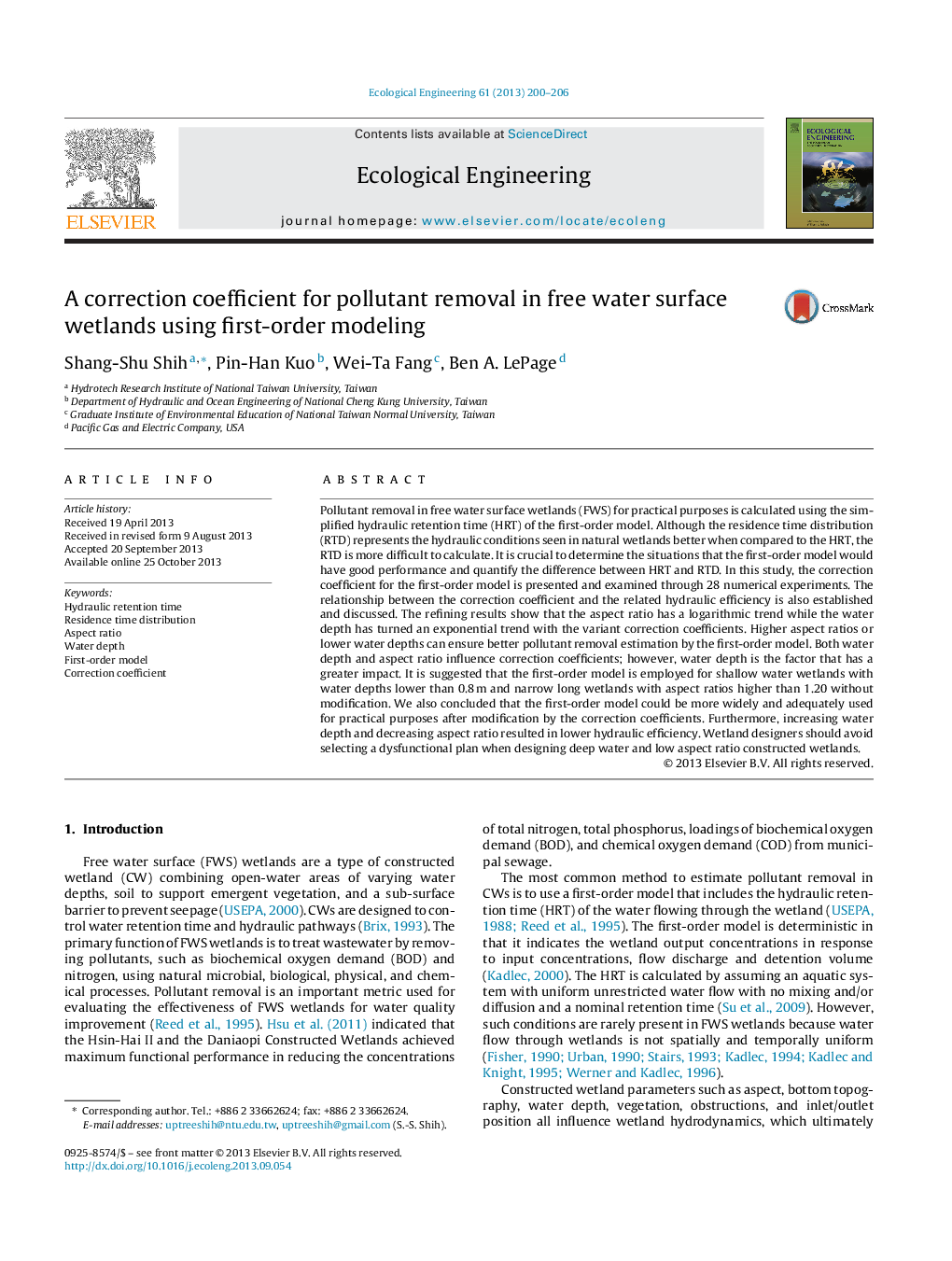| کد مقاله | کد نشریه | سال انتشار | مقاله انگلیسی | نسخه تمام متن |
|---|---|---|---|---|
| 4389480 | 1305129 | 2013 | 7 صفحه PDF | دانلود رایگان |
عنوان انگلیسی مقاله ISI
A correction coefficient for pollutant removal in free water surface wetlands using first-order modeling
دانلود مقاله + سفارش ترجمه
دانلود مقاله ISI انگلیسی
رایگان برای ایرانیان
کلمات کلیدی
موضوعات مرتبط
علوم زیستی و بیوفناوری
علوم کشاورزی و بیولوژیک
بوم شناسی، تکامل، رفتار و سامانه شناسی
پیش نمایش صفحه اول مقاله

چکیده انگلیسی
Pollutant removal in free water surface wetlands (FWS) for practical purposes is calculated using the simplified hydraulic retention time (HRT) of the first-order model. Although the residence time distribution (RTD) represents the hydraulic conditions seen in natural wetlands better when compared to the HRT, the RTD is more difficult to calculate. It is crucial to determine the situations that the first-order model would have good performance and quantify the difference between HRT and RTD. In this study, the correction coefficient for the first-order model is presented and examined through 28 numerical experiments. The relationship between the correction coefficient and the related hydraulic efficiency is also established and discussed. The refining results show that the aspect ratio has a logarithmic trend while the water depth has turned an exponential trend with the variant correction coefficients. Higher aspect ratios or lower water depths can ensure better pollutant removal estimation by the first-order model. Both water depth and aspect ratio influence correction coefficients; however, water depth is the factor that has a greater impact. It is suggested that the first-order model is employed for shallow water wetlands with water depths lower than 0.8Â m and narrow long wetlands with aspect ratios higher than 1.20 without modification. We also concluded that the first-order model could be more widely and adequately used for practical purposes after modification by the correction coefficients. Furthermore, increasing water depth and decreasing aspect ratio resulted in lower hydraulic efficiency. Wetland designers should avoid selecting a dysfunctional plan when designing deep water and low aspect ratio constructed wetlands.
ناشر
Database: Elsevier - ScienceDirect (ساینس دایرکت)
Journal: Ecological Engineering - Volume 61, Part A, December 2013, Pages 200-206
Journal: Ecological Engineering - Volume 61, Part A, December 2013, Pages 200-206
نویسندگان
Shang-Shu Shih, Pin-Han Kuo, Wei-Ta Fang, Ben A. LePage,